Journalism in Action: Beverly Deepe Keever and Her Career
Archives & Special Collections, University of Nebraska-LincolnTravels through Asia
In 1960, with the end of the US election, Beverly Keever (née Deepe) began to look for the next step in her career. She had long been interested in travelling to Asia, so she convinced a friend to take a year-long journey through Asia with her. When her friend dropped out of the plan last minute, Keever decided to go alone and write articles about her travels. The Associated Press (AP) agreed to run some of the stories, and she decided to sell any other stories she wrote along the way.
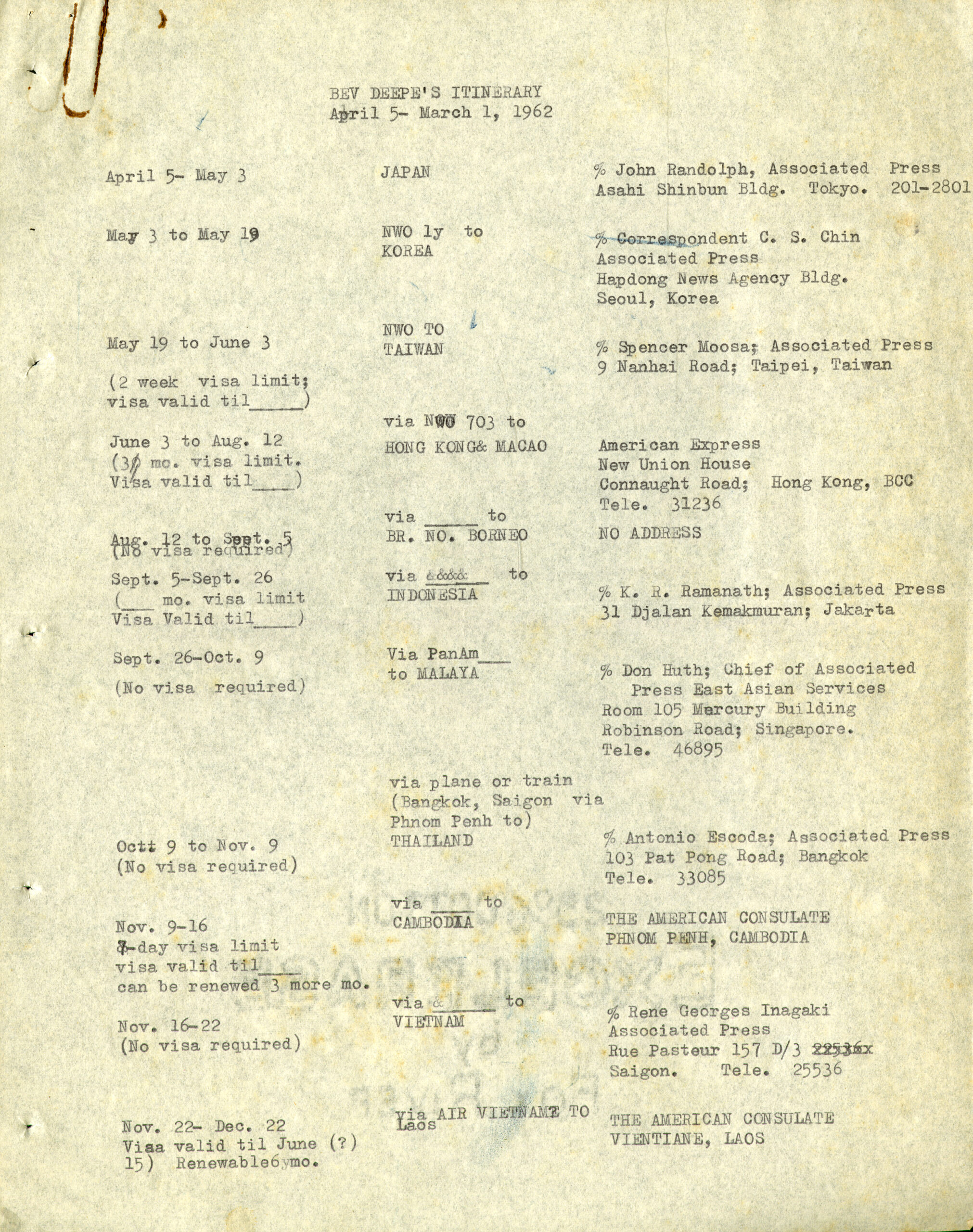
Travel Itinerary
Keever planned to travel through Asia for about a year with a friend. She created a detailed itinerary so her family could track her travels across Asia.
Life in Tokyo
Beverly Keever’s (née Deepe) first stop on her journey through Asia was Japan. She arrived in Tokyo in April 1961 and quickly got a night job teaching English to university students and translators. Through discussions with her students and by hiring translators, she began writing about politics, the university system, coffee shops, jazz music’s popularity, geishas, and life in Tokyo. Many of these pieces were never published and only appeared in Keever’s letters home to her parents and sister, Joanie Deepe.
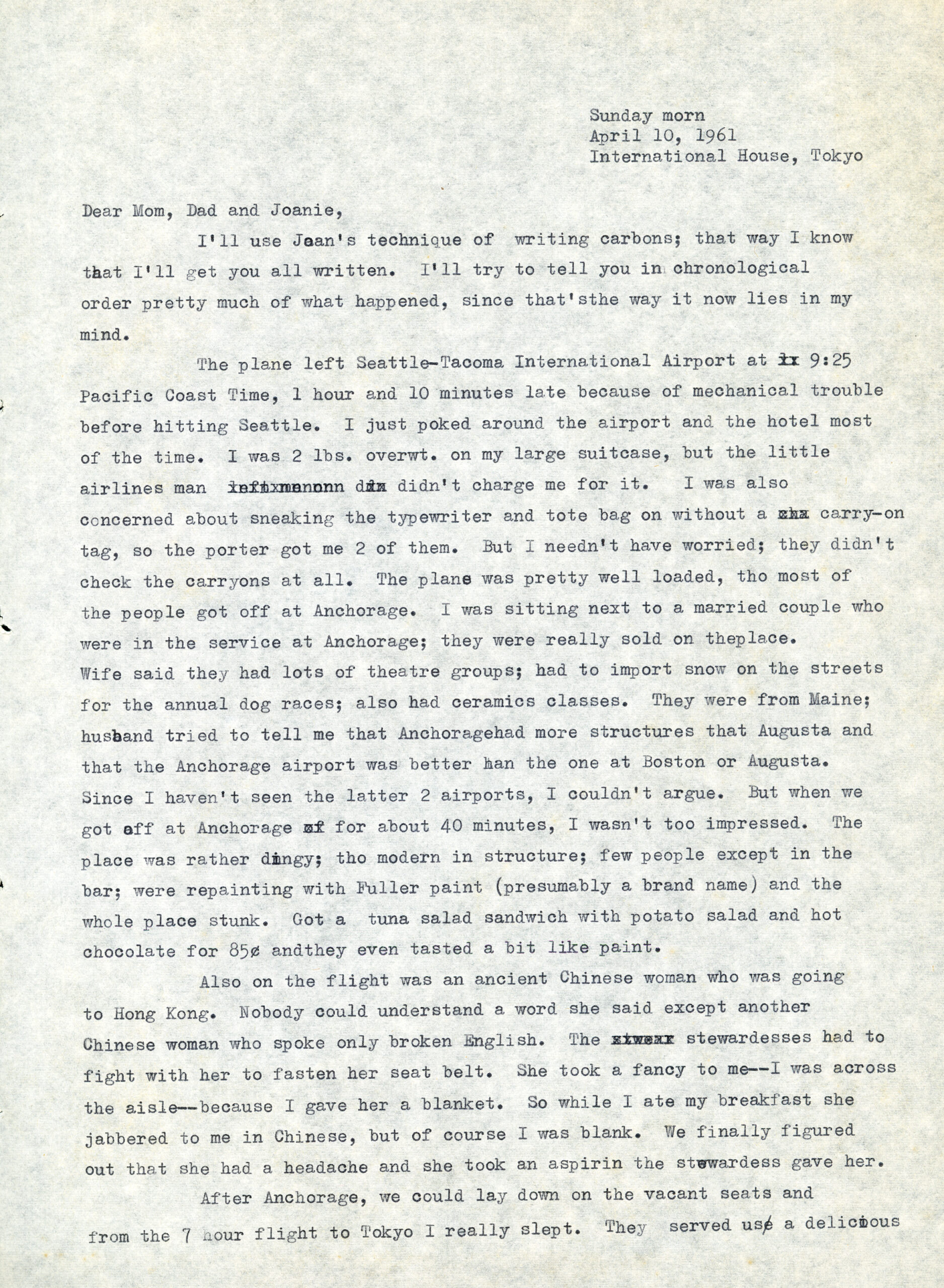
Keever arrives in Asia
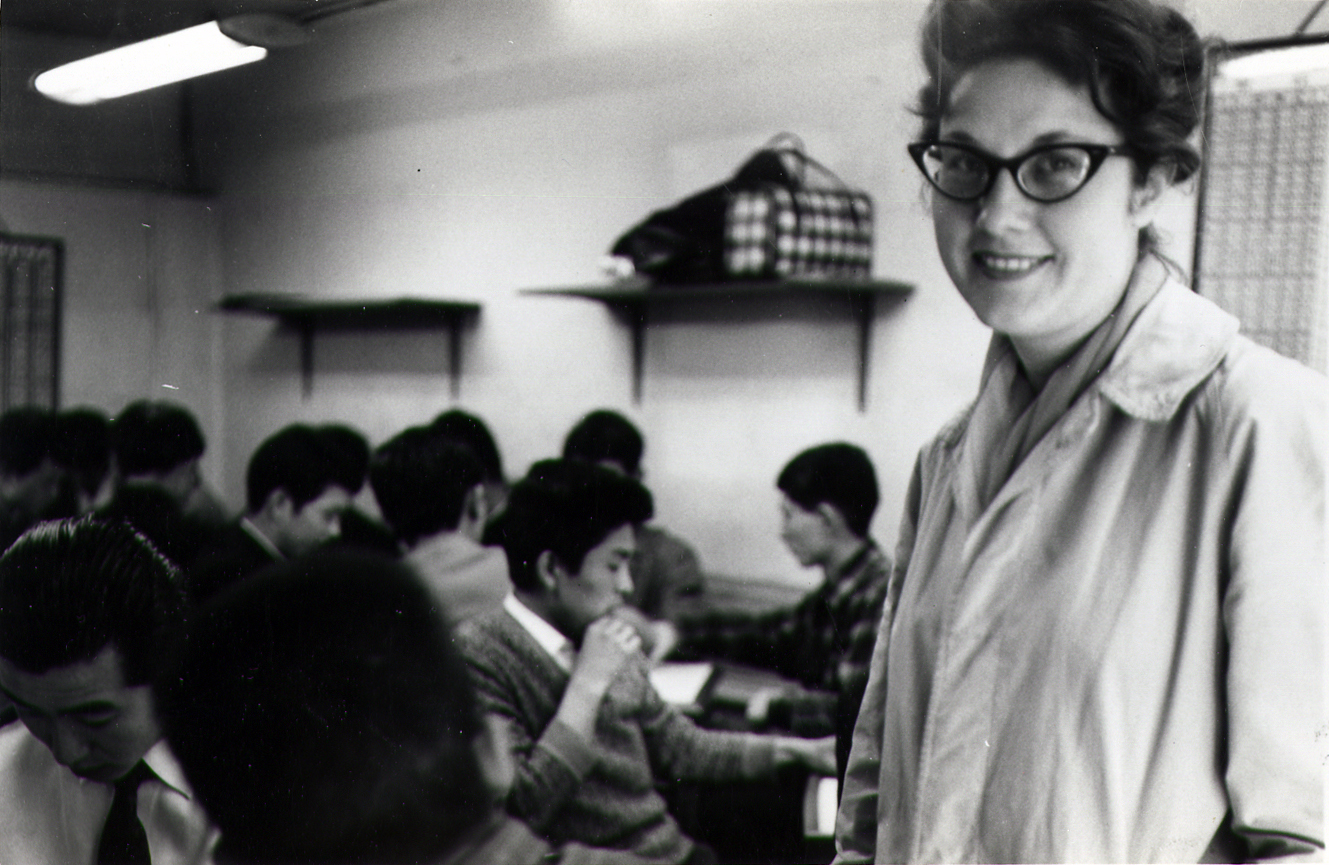
Teaching English
While Keever was in Japan, she taught English in a Tokyo school. Most of her students were either college men learning English in school or business men hoping to become translators. Keever enjoyed asking her students about life in Japan, and she took extensive notes on college life, dating, and politics.
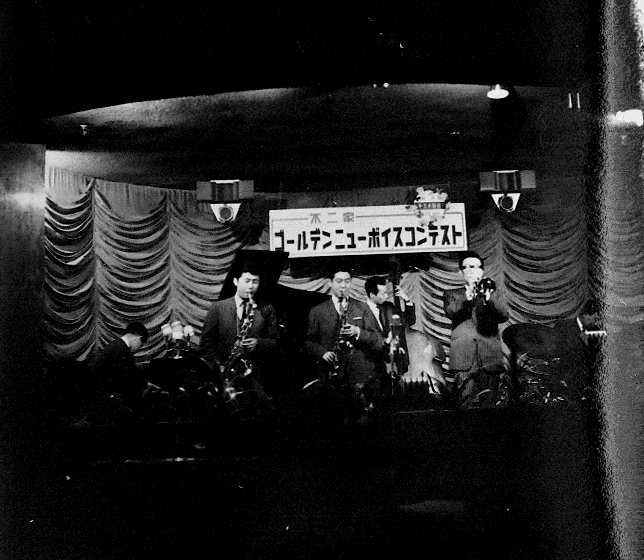
Modern Japan
Keever was deeply fascinated by the Westernization taking place across Asia in the 1960s. In Japan, she went to popular Jazz cafes, visited suburban Japanese-Western fusion homes, and talked to the Japanese people she met about their attitudes toward America.
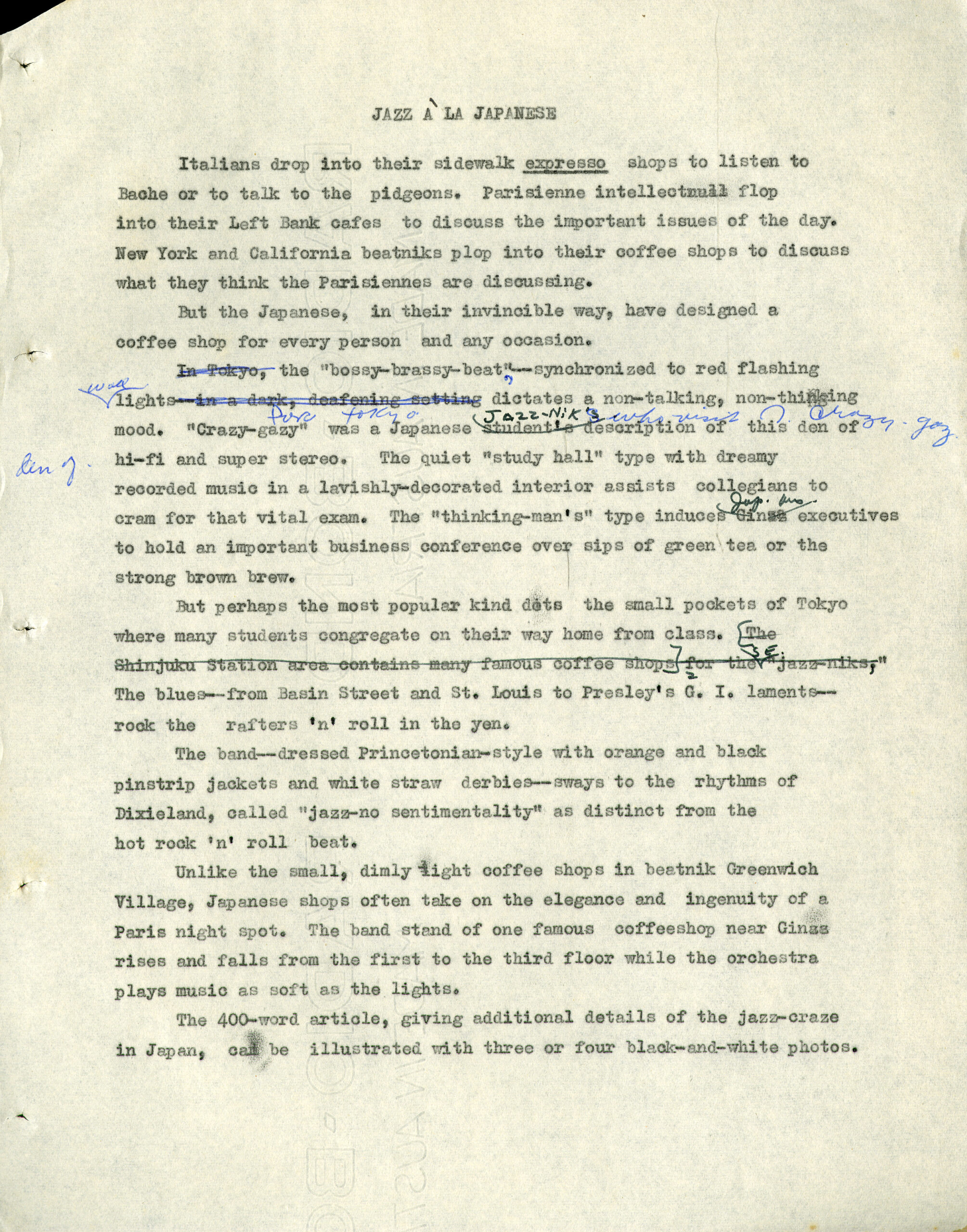
Jazz A La Japanese article proposal
As a freelancer, Keever had to propose articles to publications in the hopes that they would pay for her writing. This article proposal was sent to several different publishers and layed out an article about the popular Japanese jazz clubs across Tokyo.
The May 16 Coup D’état
In May 1961, Beverly Keever (née Deepe) arrived in South Korea. She spent a week in Seoul interviewing people about US aid and the Korean economy. Then she headed South to rural Cheongju and Busan to see some of the US-aid-funded projects. However, upon hearing about the start of the May 16 military coup d’état, she quickly returned to Seoul. The coup saw the overthrow of the democratically elected government of Prime Minister Chang Myon and President Yun Posun and their replacement with the reformist military Supreme Council for National Reconstruction, led by Park Chung-hee. Keever focused on public opinion and noted there seemed to be deep support for the military in Seoul, although there were already concerns about what the coup would mean for civil liberties and democracy in South Korea. Keever wrote six articles for the AP while in Korea.

Aftermath of the Korean War
When Keever arrived in South Korea, it was a time of intense change in the country. Korea had been devastated by the war and was trying to find new footing to build its economy. Keever visited a USAID factory producing fertilizer, as well as several farms in the area of Chungyu [Cheongju?]. She later wrote to her parents about the poverty she witnessed and commented on the poor quality of the soil.
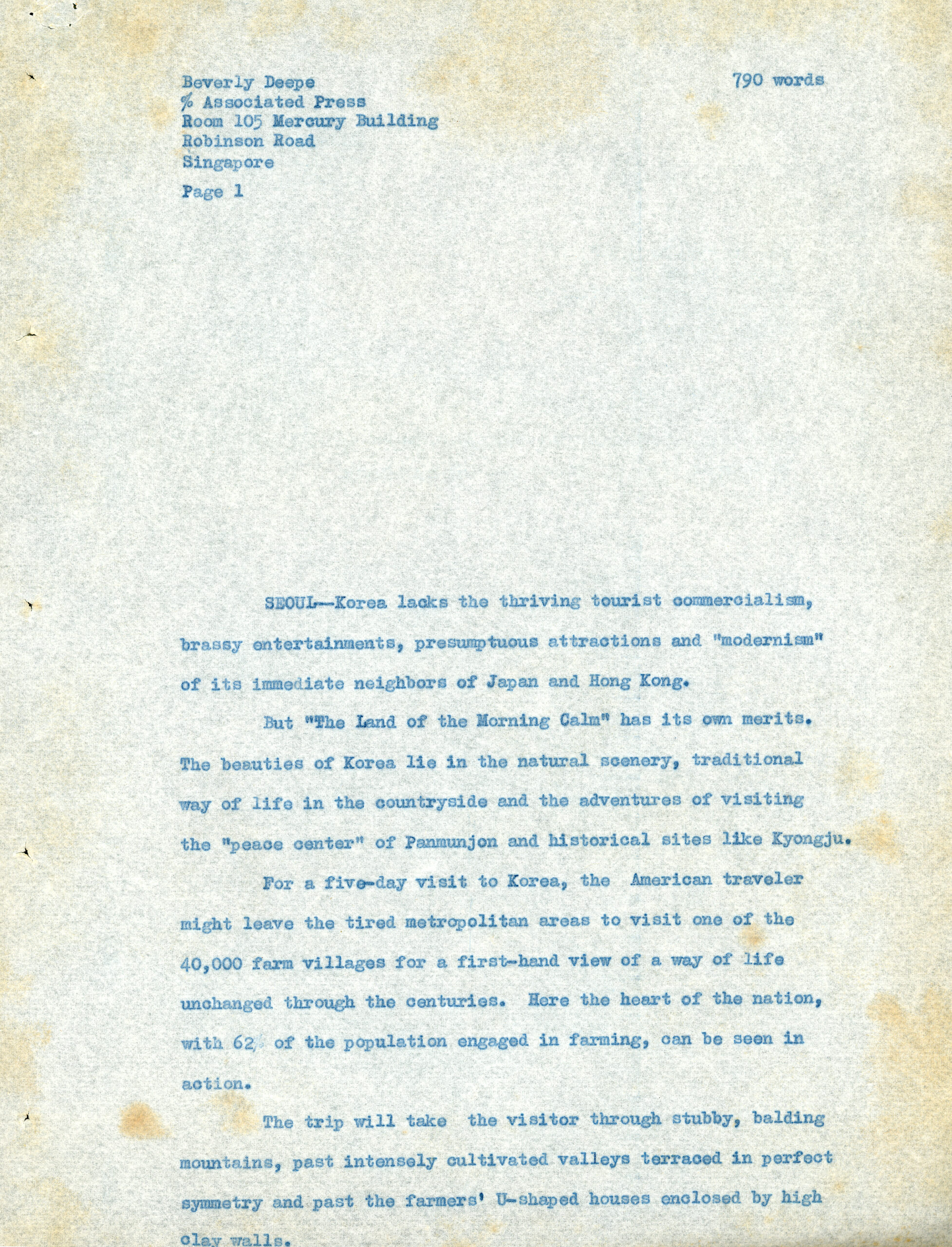
Article on Korean Tourism
Keever’s original intent in going to Korea was to write articles for American tourists about tourism in Korea and about post-Korean War US economic aid. This article about tourism gives Keever’s impressions of the struggling post-war country.
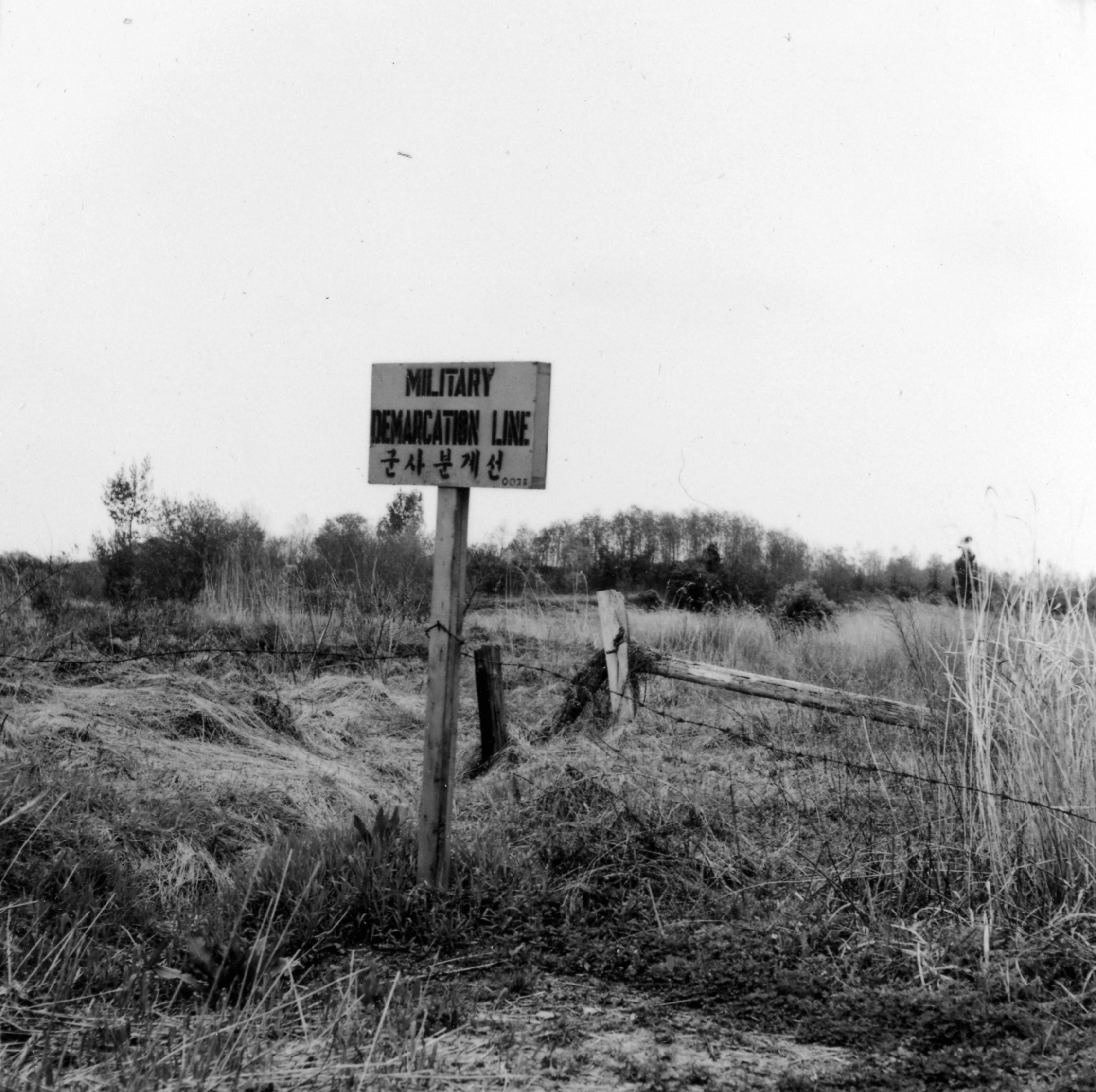
Demilitarized Zone
Keever briefly visited the DMZ, which at the time was simply a field with a barbed wire fence. She was not allowed to visit North Korea.
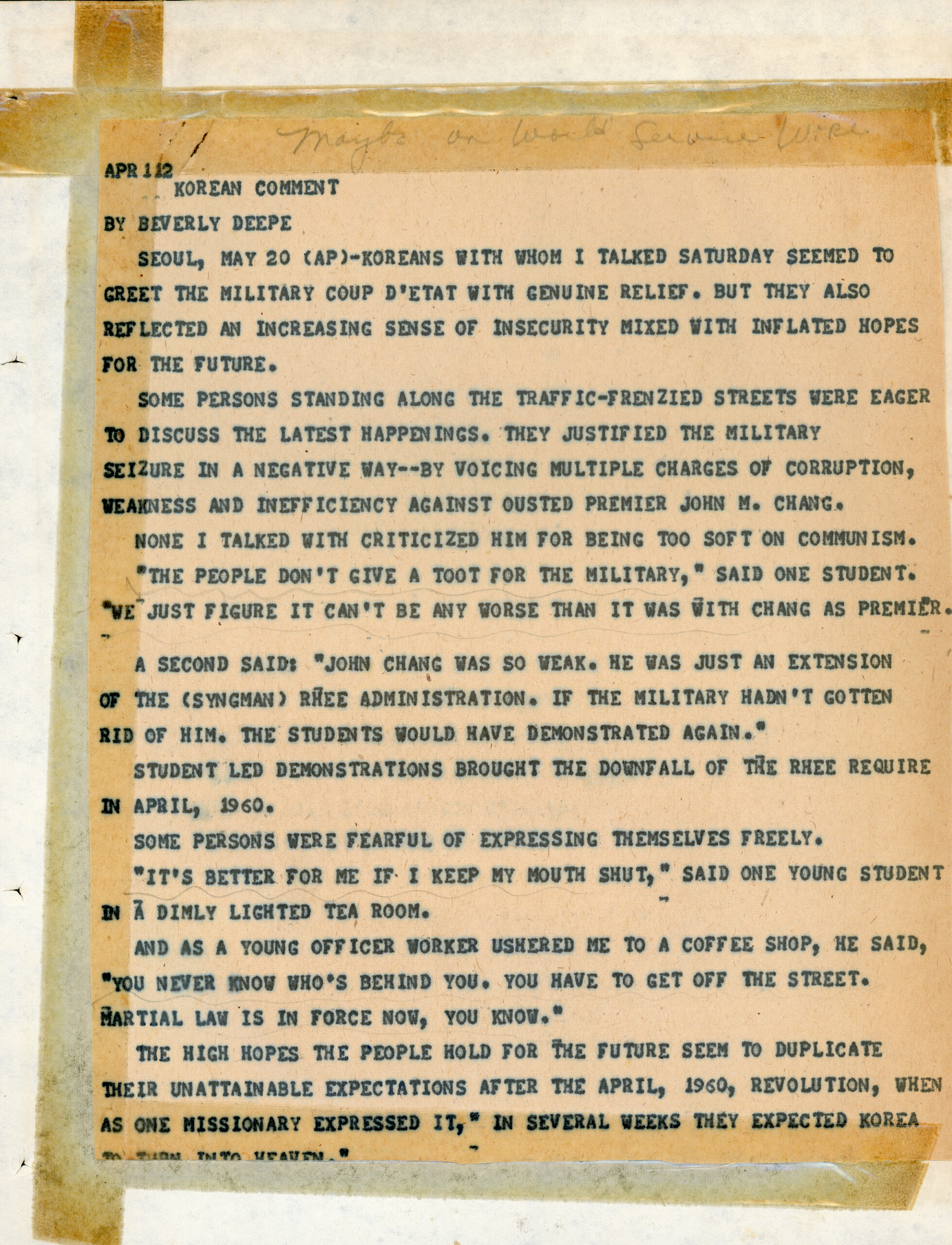
Article about the Korean May 16 Coup
While Keever was in Korea, she was surprised by the unexpected May 16 military coup. Keever wrote several articles about public opinion in the aftermath of the coup, and was surprised by people’s indifference to the change.
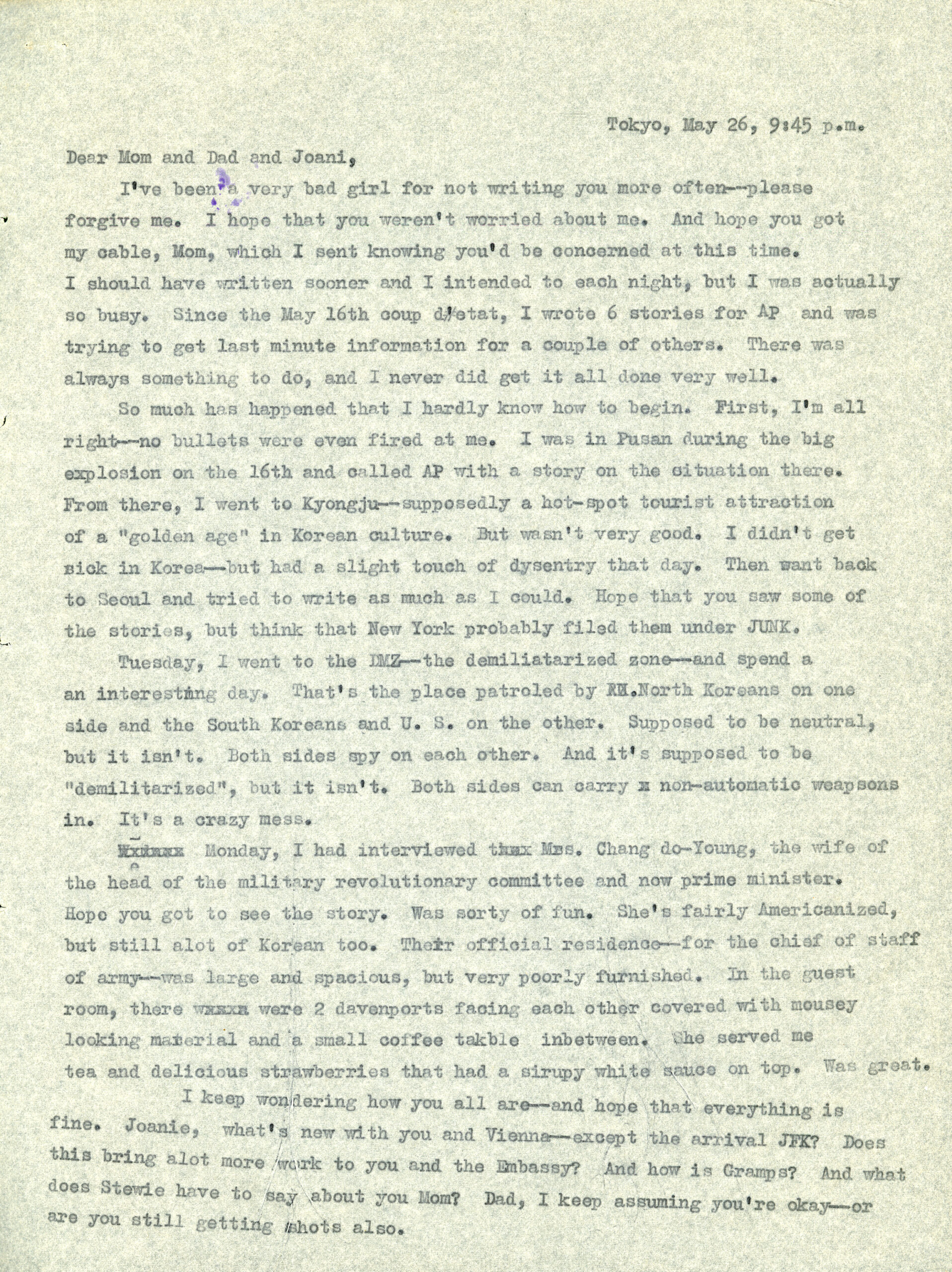
Letter from Beverly Keever to her Family
Shanghai Through a Porthole
Shanghai was the next stop in Beverly Keever’s (née Deepe) tour of Asia, but upon arriving in Shanghai, she was told as a U.S. citizen, she could not leave her ship. Undeterred, Keever went about interviewing the sailors on her ship about their experiences onshore and she took meticulous notes on everything she saw out of her small porthole. At the time, even this limited view into China was rare in the American Press, so the AP published her story.
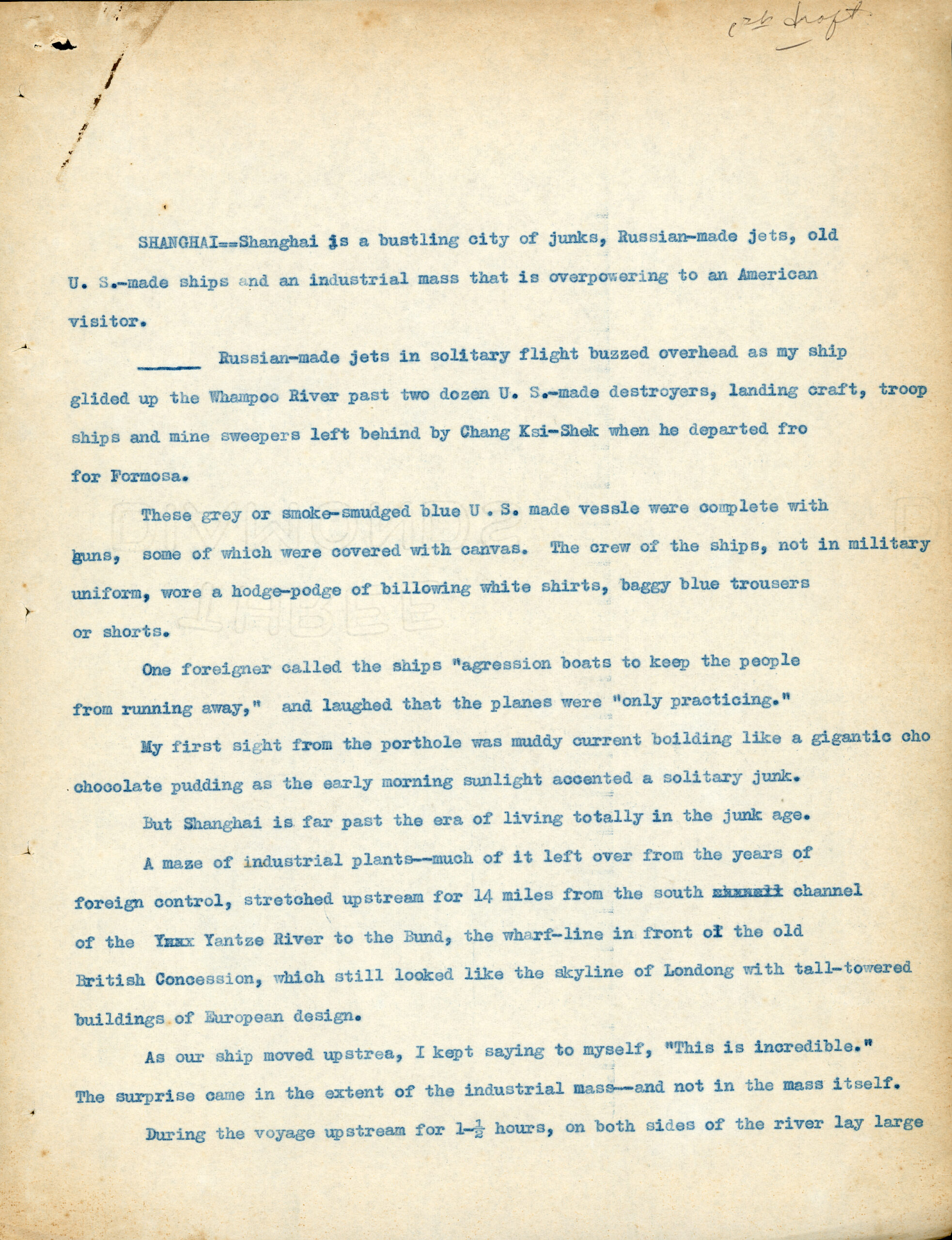
Shipside View of Drab Shanghai
Singapore and Hong Kong’s Opium Addicts
Beverly Keever’s (née Deepe) ship went on to Singapore and there AP-staffer Hal McClure suggested she write about Singapore’s opium and heroin smuggling problem. She talked with customs agents and police there, and then followed the story on to Hong Kong. There she visited Tai Lam Prison, which had the aim of rehabilitating opium addicts. She interviewed prison guards, the prison doctor, and some of the prisoners. In Hong Kong, Keever also met with narcotics police and went on a raid of an opium den. She later visited an opium den secretly with an addict. Keever wrote several articles based on this research, which were published by the AP.
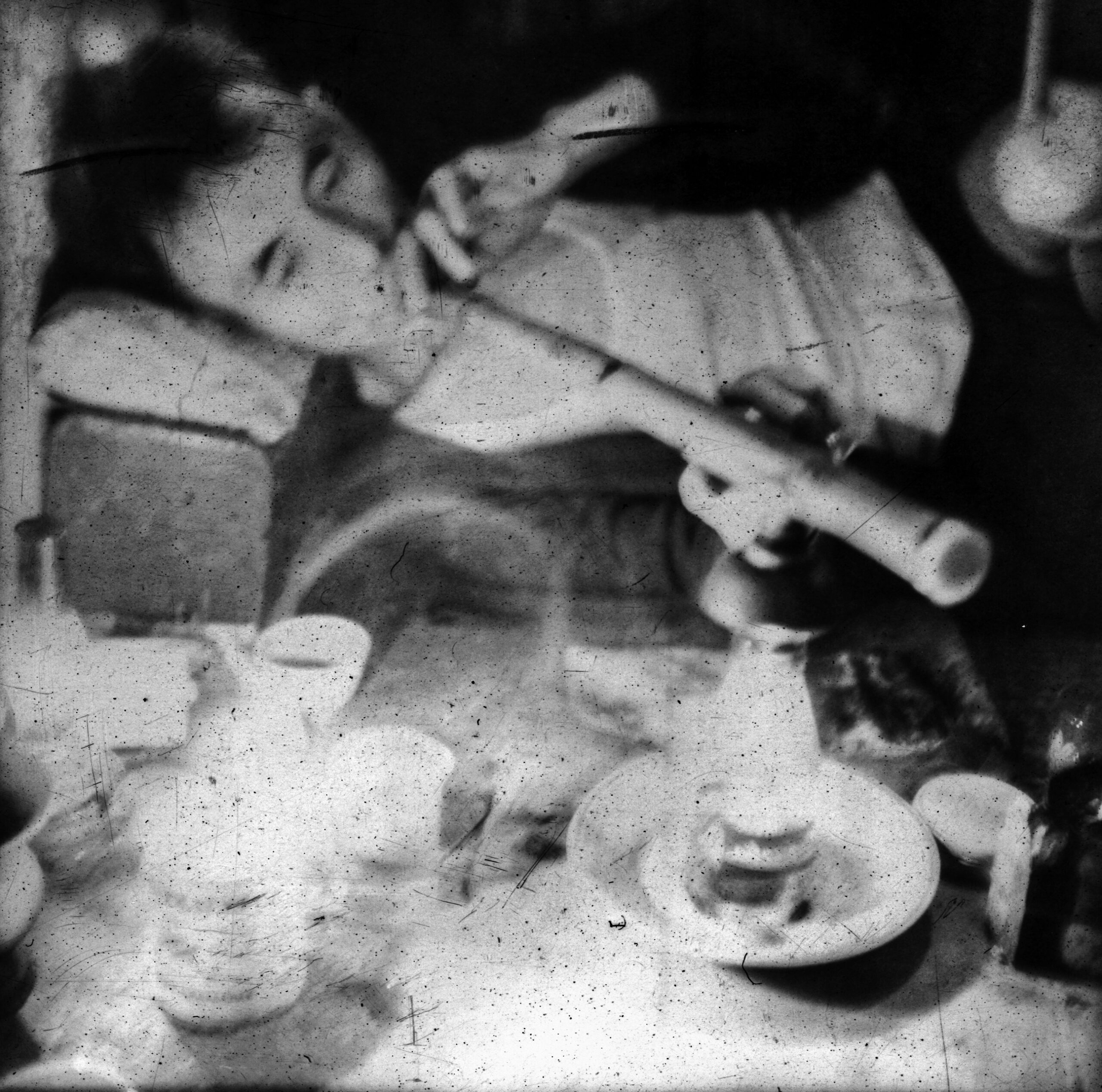
Visit to an opium den
Keever was interested in both the regulation of the opium trade and in the lives of opium addicts. She went with a group of police to an opium den in Singapore and took a series of photographs there.
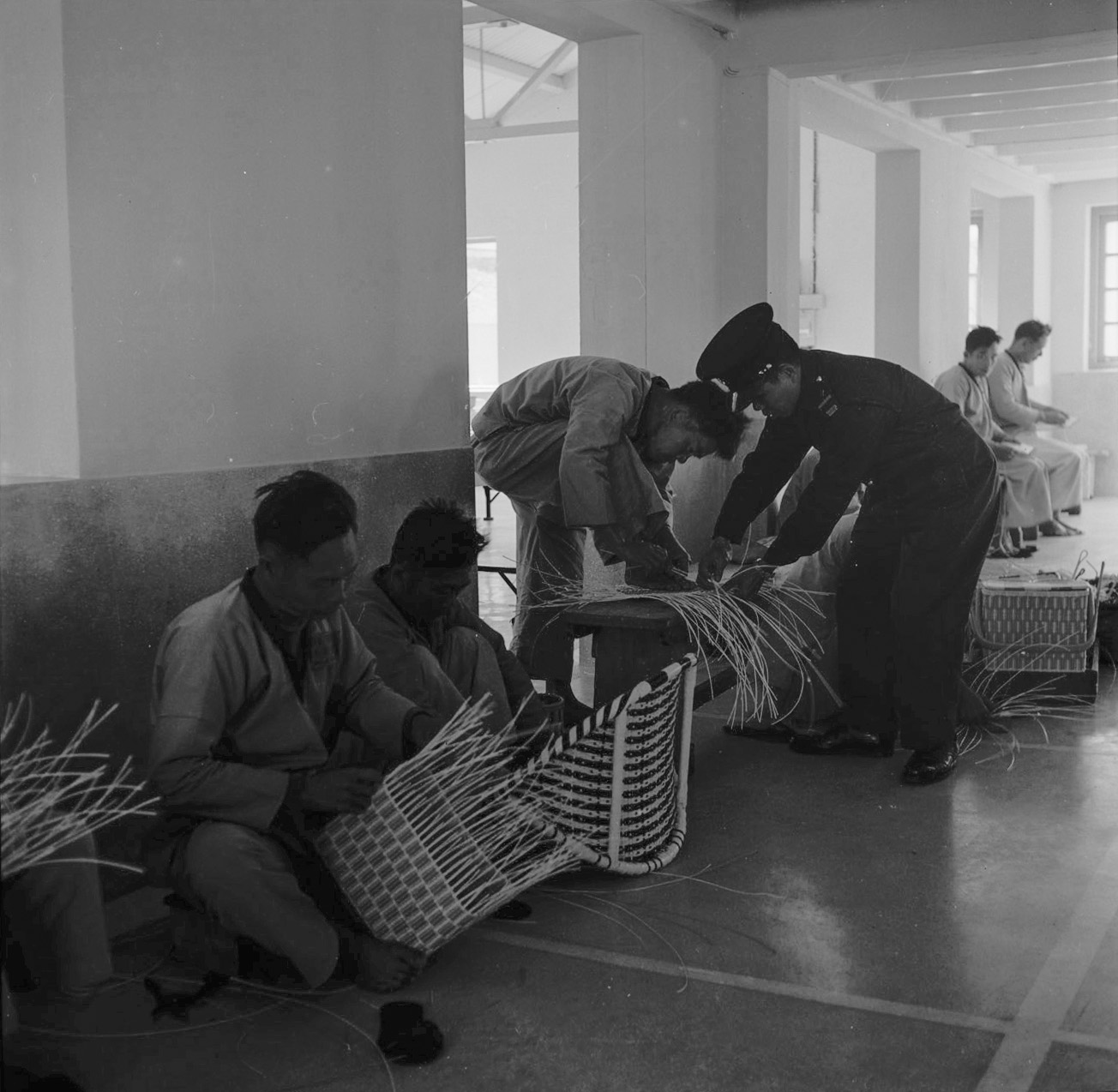
Visit to Ai Lam Prison
In Hong Kong, Keever visited a prison that held opium addicts. She interviewed prisoners, doctors, and wardens about the prison and the process of detoxing. This picture was taken inside the prison of inmates weaving baskets and wicker furniture.
Island Nations
Beverly Keever (née Deepe) continued to travel through Asia until the end of 1961. She visited the Malaysian and Indonesian sides of Borneo Island, Macau, Brunei, and briefly returned to Hong Kong. Keever was particularly interested in the way that tradition and western modernization coexisted in the lives of the people in the region. She also documented the Chinese diaspora that saw Chinese citizens move into the small islands off China’s coast.
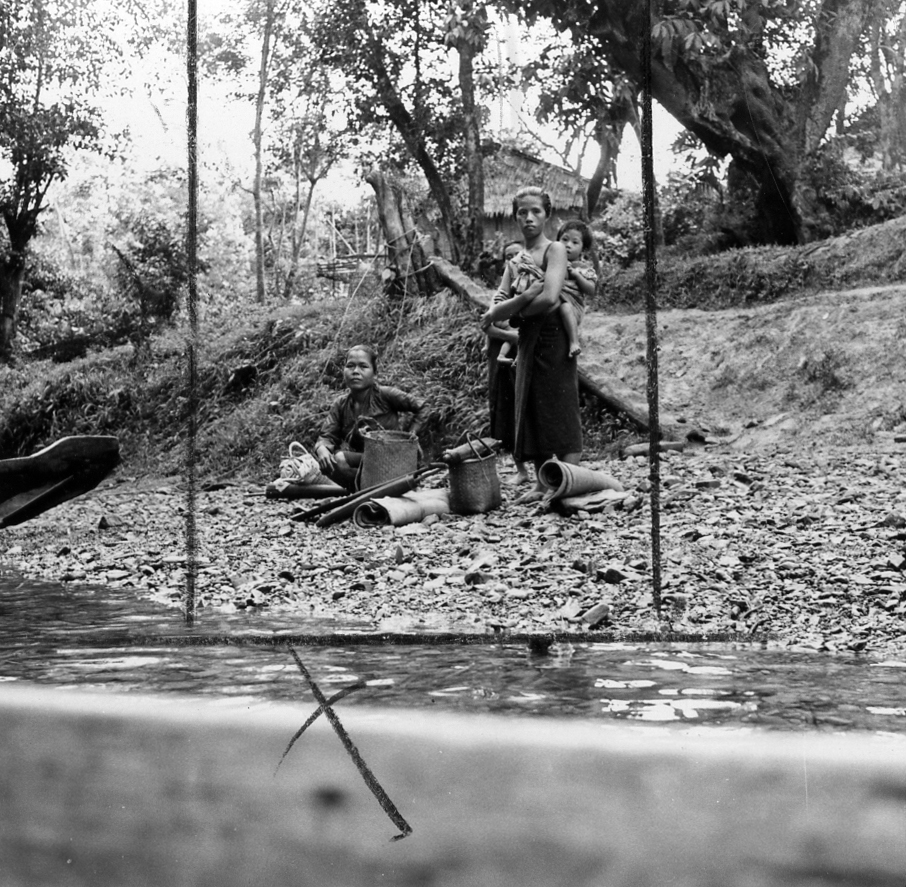
Visit to Borneo
On Borneo Island, Keever was interested in writing about the modernization and Westernization of the people. She took a series of photos about the lives of rural Bornean villagers.

Writing for the AP
As Keever traveled, she frequently wrote to her AP editors, trying to sell them her photographs and stories. Over time, she got a clearer idea of what the AP was looking to publish and she tailored her writings to their needs.

Modernization in Brunei
Keever wrote articles about how traditional practices like head hunting and piracy were dying out in the region. This is one of the articles she wrote for the AP.
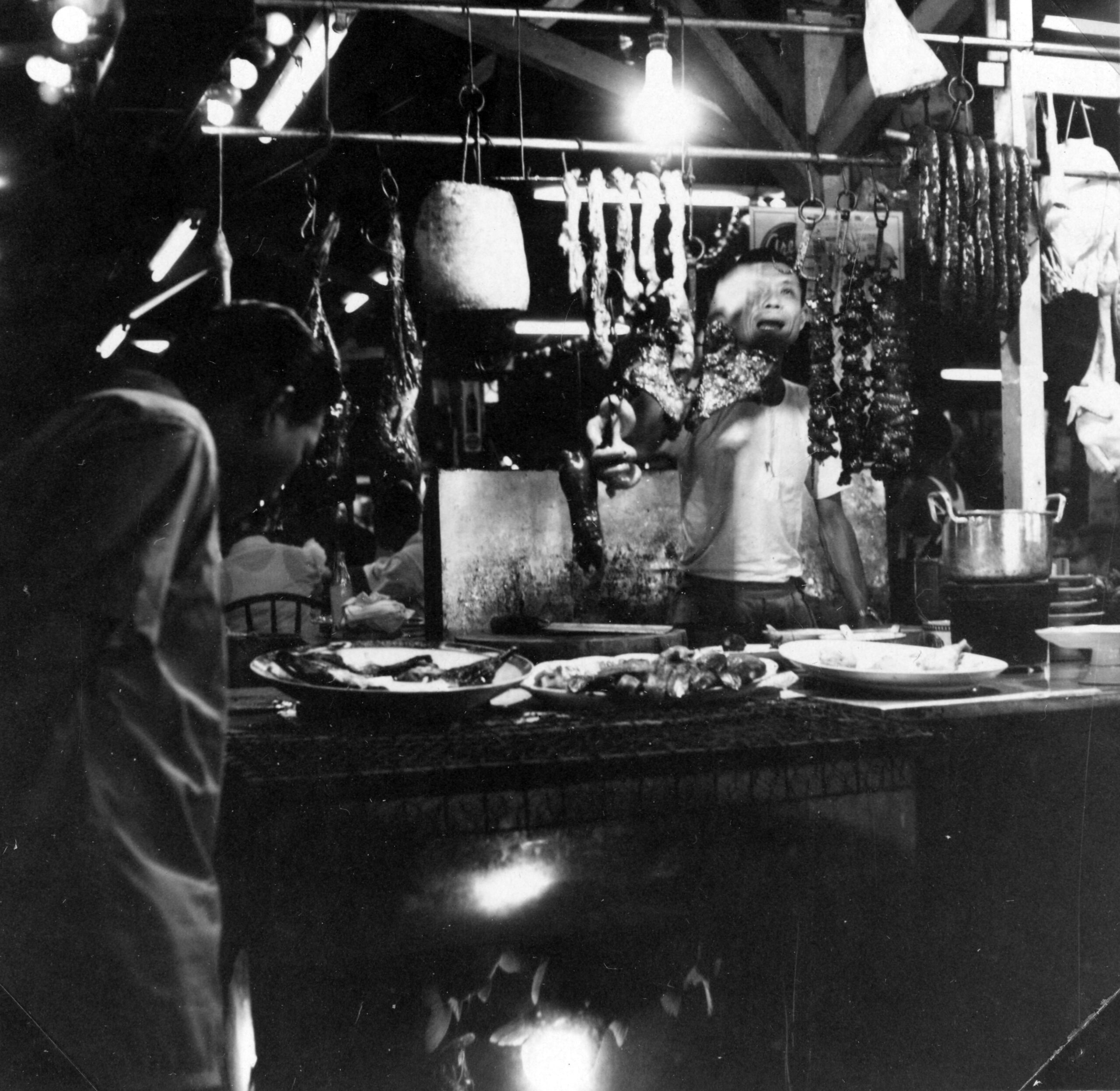
Sarawak Market
While she was in Brunei, Keever took a series of photos of the Sarawak night market. In this photo, a vendor cooks meat on a large grill.
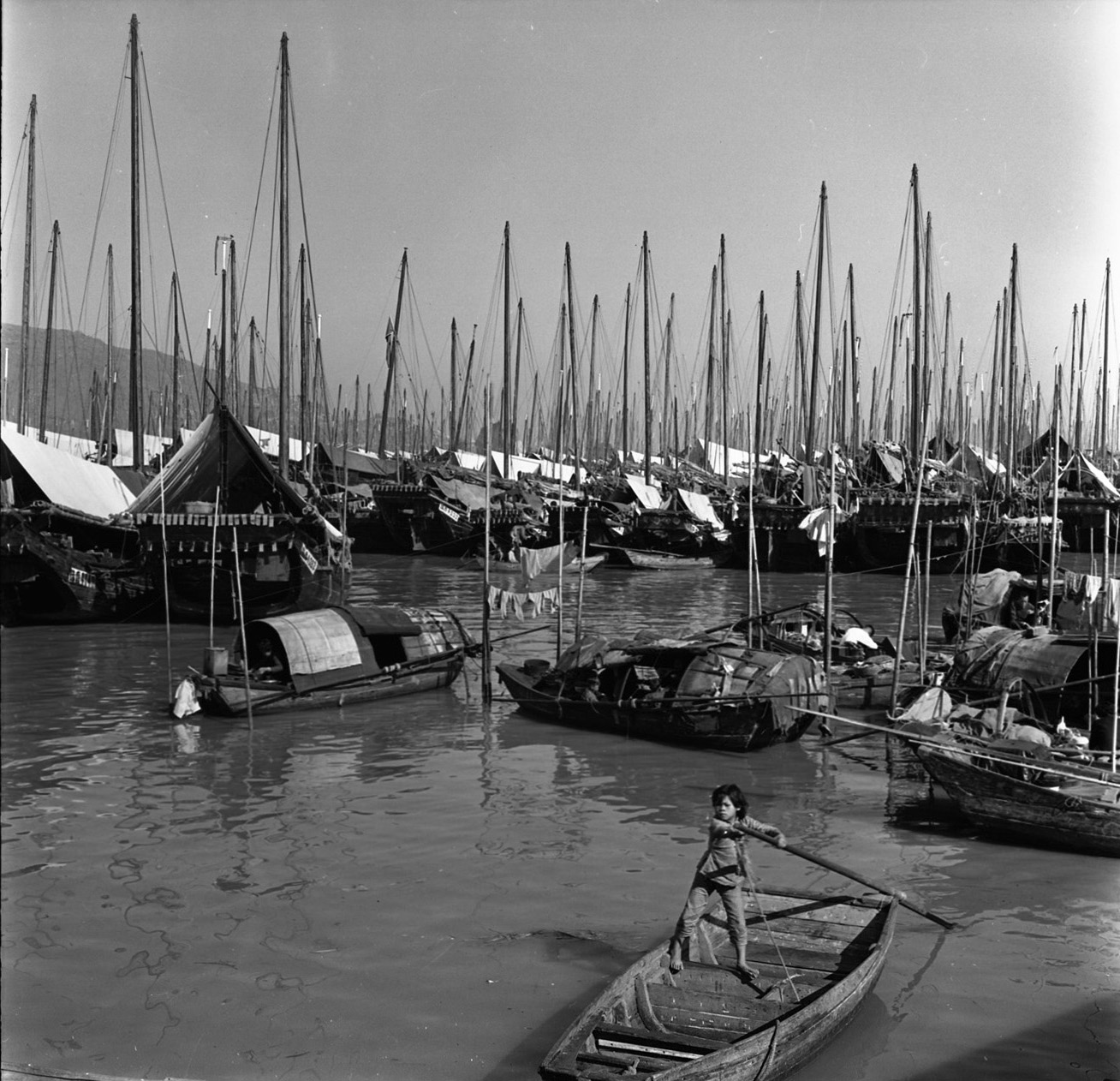
Macau Immigration
During her time in Macau, Keever was particularly interested in the lives to recent Chinese immigrants fleeing Communist China. This is part of a series of images Keever took of Macau harbor and the houseboats docked there.
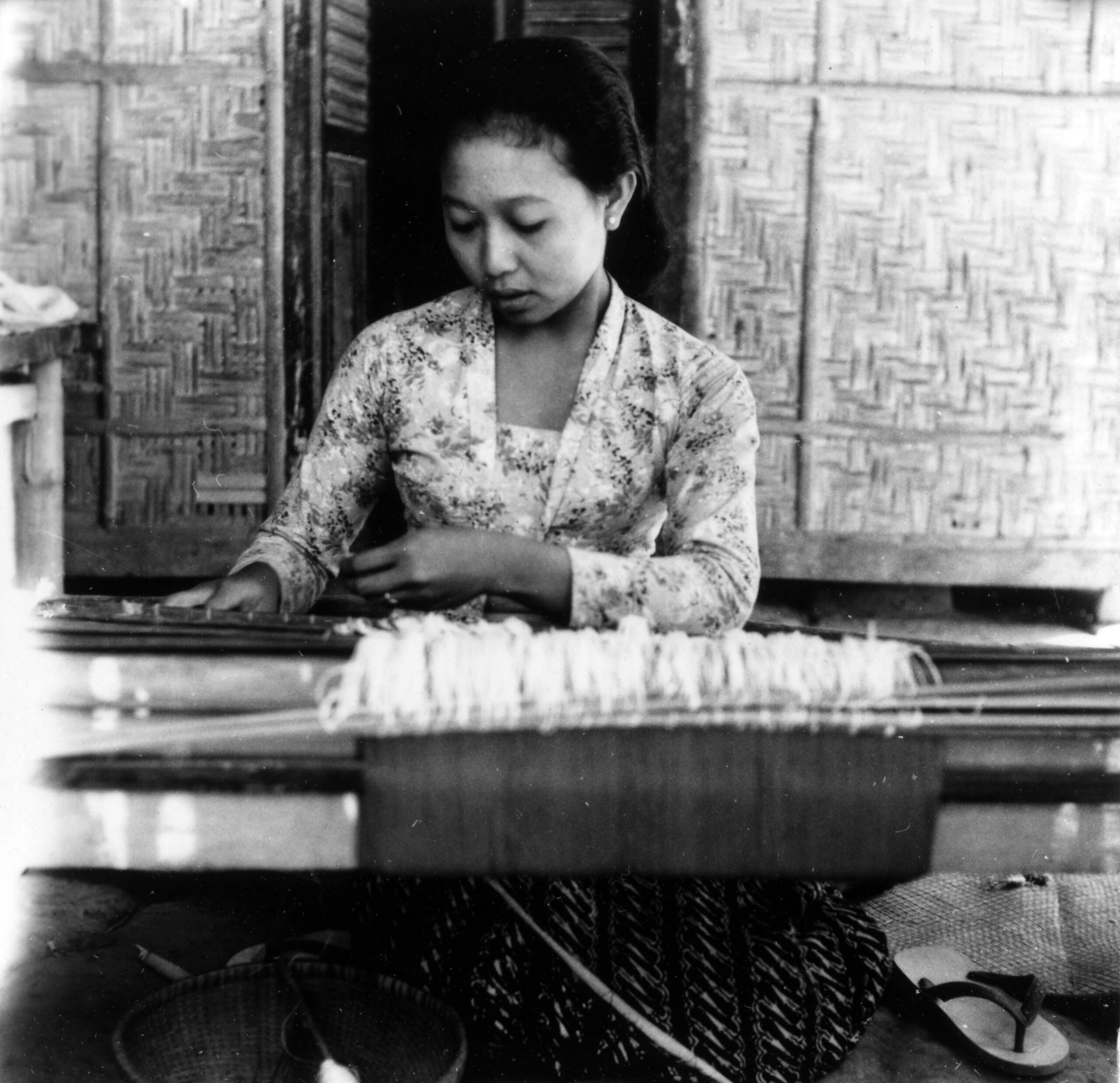
Indonesian Crafts
In Indonesia, Keever went to a workshop where traditional crafts were being practiced. She was particularly interested in the craftsmen making batik fabric. In this photo a woman weaves the the fabrik that will later be waxed and then dyed.
Onward to Vietnam
At the end of 1961, Beverly Keever heard reports that the military and political situation in Vietnam was deteriorating and that there were few Western reporters there. Keever decided to catch a boat from Hong Kong to Saigon, and she arrived in Saigon in February, 1962. Keever had originally planned on being in Saigon for two weeks and to travel on through Cambodia, Laos, Burma [Myanmar], Pakistan, India, Ceylon [Sri Lanka], Nepal, and Afghanistan. However, as the United States became increasingly involved in Vietnam, she decided to stay longer. Keever would stay in Vietnam until 1968.
